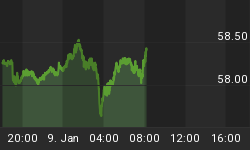Intra-day averages clearly show market intervention
You've seen it before, right? Suddenly, the price of gold or silver drops like a rock. For no apparent reason a chunk of its value is lost within minutes. In other markets however, these kinds of rapid declines are extremely rare.
Why do these sharp price declines seem to appear out of nowhere? Usually professional investors do their best not to execute large sell orders all at once in order to avoid moving the market so as to conserve profits. Nevertheless, in the precious metals market it seems some market participants are often clumsy, triggering abrupt price drops. The reason however is not clumsiness, but other interest: these players want to influence prices with their selling actions. Since August 5th, 1993, when these sudden price moves began occurring with statistically measurable frequency - a number of financial institutions have intervened systematically against precious metal markets.
These actions were introduced under leadership of the U.S. Federal Reserve. There are a number of motives behind it, such as capping inflation expectations or calming markets by signaling stability during times of crisis. Over time the profit interests of private banks with close business ties to the central bank were also a reason. These shock-like price pull backs are a means of pressuring gold and silver prices in order to intimidate and unsettle investors and drive them out of the market. These price declines have been thoroughly analyzed in what is now the single most significant monetary metal market - gold (see www.geheime-goldpolitik.de/english).
But what about gold's smaller brother, silver? Let's have a closer look below using what are known as seasonal intra-day charts. These differ fundamentally from charts most of us are accustomed to viewing. While normal intra-day charts depict the path of prices during one day, a seasonal intra-day chart averages the prices of a multitude of days and displays them as a single price path in one chart. This allows you to easily spot typical time-of-day patterns. The following chart shows the average intra-day path of silver over the last 11 years (starting with the availability of intra-day prices for silver). The horizontal axis shows time-of-day (ET), the vertical scale is silver's price (indexed to 1000). This price averaged intra-day chart was calculated on the basis of millions of one-minute price bars.

Chart 1
An increased number of sharp price declines is clearly visible at silver's fixing in London around 7:00AM (ET). They were created by the fact that so many shock-like price interventions took place so often at this point that the average makes them visible. The reason for this accumulation may be the importance of the London fixing as a benchmark for the market. Apparently it is hoped that price shocks occurring at this time point will have a stronger influence on investors' decisions than at other times of the day. Another sharp decline can be seen at 10:00 AM New York time. The reason is the tight correlation of silver with gold. To illustrate, the following chart shows the averaged intra-day price path of gold taken from data over the same length of time, i.e. 11 years.

Chart 2
You can see a very sharp fall in gold prices at 10:00 AM in New York. This is also when gold's afternoon fixing in London takes place and increased trading against gold occurs. This is the reason why silver often falls here too - silver traders often take their ques from fluctuations in gold prices. However not all shock-like price moves in silver can be explained by moves in the gold market. The main price drop in silver has no equivalent in gold. The price decrease at silver's fixing shows that there are separate actions in the silver market, independent of those in the gold market.
However both markets demonstrate clustering of price moves that do not necessarily have anything to do with time-of-day. In no way are market interventions uniformly organized, rather activities change over time. There were years in which price shocks were rare (or did not take place often enough at the same time) and thus are not visible in the average course of prices (e.g. 2010). There were also years with preferences for different times of day. In some years price interventions coincided strongly with trading hours at New York's COMEX futures exchange. The following chart exemplifies the average intra-day price of silver in 2002.

Chart 3
This clearly shows that price declines frequently occur at the open and then again at the close of COMEX trading hours. The motive for the frequent drop at the open is likely to irritate traders right from the start. The decline at the close is again due to price benchmarking, especially in view of the next trading day. The differences to chart 1 show that there is no rigid course of action, which is obvious for an activity that takes place over years. Price shocks also occur when the protagonists want them to occur. The focus changes over time. That's why price shocks sometimes accumulate at the fixing, sometimes at the open or at the close. Incidentally chart 3 shows no discernible decline at the point of fixing. This emphasizes that apparent declines in chart 1 at the fixing are not due to technical reasons such as market tendencies, but indeed result from price interventions.
On August 5, 1993 systematic intervention in the gold and silver markets began and continue to this day. Shock-like price declines are an important part of these actions. The players prefer certain times of day for price shocks to occur, making them easy to detect in average intra-day charts. The declines in silver are not only due to a correlation with gold. Rather the differences between the average intra-day charts of silver and gold show that there is independent price intervention in the silver market.
















